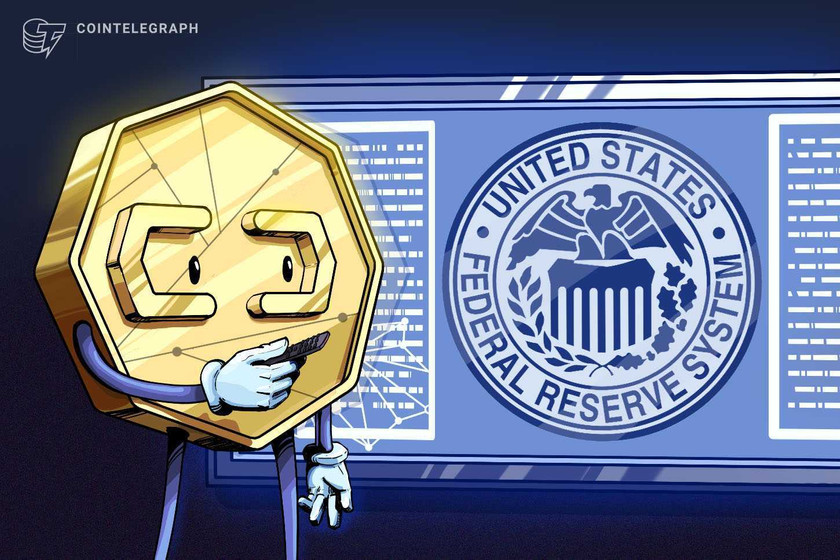Fed reverse repo reaches $2.3T, but what does it mean for crypto investors?

Investors avoid risk assets during a crisis, but excessive cash sitting in financial institutions could also be good for the cryptocurrencies.
The U.S. Federal Reserve (FED) recently initiated an attempt to reduce its $8.9 trillion balance sheet by halting billions of dollars worth of treasuries and bond purchases. The measures were implemented in June 2022 and coincided with the total crypto market capitalization falling below $1.2 trillion, the lowest level seen since January 2021.
A similar movement happened to the Russell 2000, which reached 1,650 points on June 16, levels unseen since November 2020. Since this drop, the index has gained 16.5%, while the total crypto market capitalization has not been able to reclaim the $1.2 trillion level.
This apparent disconnection between crypto and stock markets has caused investors to question whether the Federal Reserve’s growing balance sheet could lead to a longer than expected crypto winter.
The FED will do whatever it takes to combat inflation
To subdue the economic downturn caused by restrictive government-imposed measures during the Covid-19 pandemic, the Federal Reserve added $4.7 trillion to bonds and mortgage-backed securities from January 2020 to February 2022.
The unexpected result of these efforts was 40-year high inflation and in June, U.S. consumer prices jumped by 9.1% versus 2021. On July 13, President Joe Biden said that the June inflation data was „unacceptably high.“ Furthermore, Federal Reserve chair Jerome Powell stated on July 27:
“It is essential that we bring inflation down to our 2 percent goal if we are to have a sustained period of strong labor market conditions that benefit all.”
That is the core reason the central bank is withdrawing its stimulus activities at an unprecedented speed.
Financial institutions have a cash abundance issue
A „repurchase agreement,“ or repo, is a short-term transaction with a repurchase guarantee. Similar to a collateralized loan, a borrower sells securities in exchange for an overnight funding rate under this contractual arrangement.
In a „reverse repo,“ market participants lend cash to the U.S. Federal Reserve in exchange for U.S. Treasuries and agency-backed securities. The lending side comprises hedge funds, financial institutions and pension funds.
If these money managers are unwilling to allocate capital to lending products or even offer credit to their counterparties, then having so much cash at disposal is not inherently positive because they must provide returns to depositors.

On July 29, the Federal Reserve’s Overnight Reverse Repo Facility hit $2.3 trillion, nearing its all-time high. However, holding this much cash in short-term fixed income assets will cause investors to bleed in the long term considering the current high inflation. One thing that is possible is that this excessive liquidity will eventually move into risk markets and assets.
While the record-high demand for parking cash might signal a lack of trust in counterparty credit or even a sluggish economy, for risk assets, there is the possibility of increased inflow.
Sure, if one thinks the economy will tank, cryptocurrencies and volatile assets are the last places on earth to seek shelter. However, at some point, these investors will not take further losses by relying on short-term debt instruments that do not cover inflation.
Think of the Reverse Repo as a „safety tax,“ a loss someone is willing to incur for the lowest risk possible — the Federal Reserve. At some point, investors will either regain confidence in the economy, which positively impacts risk assets or they will no longer accept returns below the inflation level.
In short, all this cash is waiting on the sidelines for an entry point, whether real estate, bonds, equities, currencies, commodities or crypto. Unless runaway inflation magically goes away, a portion of this $2.3 trillion will eventually flow to other assets.
The views and opinions expressed here are solely those of the author and do not necessarily reflect the views of Cointelegraph. Every investment and trading move involves risk. You should conduct your own research when making a decision.

